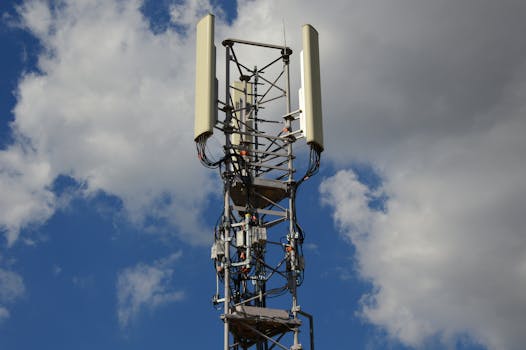
Comparative Analysis of 4G vs 5G Performance Metrics: Understanding the Future of Wireless Connectivity
Comparative Analysis of 4G vs 5G performance metrics is a crucial aspect of understanding the future of wireless connectivity. The fifth generation of wireless technology, commonly known as 5G, has been gaining significant attention in recent years due to its promises of faster data speeds, lower latency, and greater connectivity. In this article, we will delve into a comparative analysis of 4G and 5G performance metrics, highlighting the significant advancements and improvements in wireless connectivity.
Introduction to 4G and 5G
The fourth generation of wireless technology, 4G, was introduced in the late 2000s and has been the backbone of mobile networks for over a decade. 4G networks have provided relatively fast data speeds, with average download speeds ranging from 10 to 100 Mbps. However, with the increasing demand for wireless connectivity and the need for faster data speeds, the development of 5G technology has become essential. 5G networks have been designed to provide significantly faster data speeds, with average download speeds ranging from 1 to 20 Gbps.
Performance Metrics: 4G vs 5G
A comparative analysis of 4G and 5G performance metrics reveals significant differences in various aspects of wireless connectivity. Some of the key performance metrics that have been compared include data speed, latency, capacity, and reliability. In terms of data speed, 5G networks have been shown to provide significantly faster download and upload speeds compared to 4G networks. For instance, a study by Qualcomm found that 5G networks can provide download speeds of up to 20 Gbps, while 4G networks typically provide download speeds of up to 100 Mbps.
Another significant difference between 4G and 5G performance metrics is latency. Latency refers to the time it takes for data to travel from the device to the server and back. 5G networks have been designed to provide significantly lower latency compared to 4G networks, with average latency ranging from 1 to 10 ms. In contrast, 4G networks typically have average latency ranging from 50 to 100 ms. The lower latency of 5G networks makes them more suitable for real-time applications such as online gaming and video streaming.
Capacity and Reliability: 4G vs 5G
In addition to data speed and latency, capacity and reliability are also essential performance metrics that have been compared between 4G and 5G networks. 5G networks have been designed to provide greater capacity and reliability compared to 4G networks, thanks to the use of new radio frequency bands and advanced antenna technologies. For instance, 5G networks can support a large number of devices and provide reliable connectivity even in areas with high traffic density.
A study by Ericsson found that 5G networks can provide up to 10 times more capacity compared to 4G networks, making them more suitable for applications such as smart cities and IoT. Furthermore, 5G networks have been designed to provide greater reliability and uptime, with some studies suggesting that 5G networks can provide up to 99.99% uptime, compared to 99.9% uptime for 4G networks.
Conclusion
In conclusion, a comparative analysis of 4G and 5G performance metrics reveals significant advancements and improvements in wireless connectivity. 5G networks have been designed to provide faster data speeds, lower latency, greater capacity, and greater reliability compared to 4G networks. As the demand for wireless connectivity continues to grow, the development of 5G technology has become essential. With the ongoing deployment of 5G networks, we can expect to see significant improvements in various aspects of wireless connectivity, from mobile broadband to IoT and smart cities.



